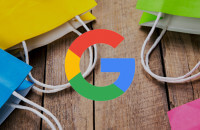Google adding features for advertisers to promote deals, drive in-store purchases
Local campaign updates, seasonality adjustments and more.
Some of these announcements were shared or hinted at during Google Marketing Live last month. Here’s the rundown of what’s available now or coming soon.
Seasonality adjustments. If you know you’ve got a sale or promotion coming and anticipate a jump in conversion rates, you can now use seasonality adjustments to signal Google’s Smart Bidding system to prepare for the increase and adjust more quickly.
More in-market audience segments. Google has added more in-market segments in categories such as beauty, sports, education and real estate, including 30 new retail categories. In-market audiences for search are grouped based on purchase intent signaled by users’ search and browsing behavior.
Calls for Local campaigns. Local campaigns, launched last year, are one of Google’s automated campaign formats and expressly aimed at driving traffic to physical locations. The ads run across Google search, Maps, YouTube and the Display Network.
Soon, advertisers will be able to use Local campaigns to drive calls to their business locations. Store visits measurement will not be required for this feature to work.
Group locations for Local campaign messaging. Advertisers can now set up location groups, or subsets, of their locations to tailor budgets and messaging to specific locations based on in-store promotion and sale schedules. Google says “on sale near me” searches have increased by 250% since 2017. (It’s never quite clear how much of the “near me” increases are fueled by auto-suggestions.)
Asset reporting for Local campaigns. Google is also rolling out asset reporting for Local campaigns so you can see how your creative elements — ad headlines, descriptions and images — are performing. Don’t expect granular detail here, though. The asset report ranks elements with labels such as “Best” and “Good”.
Promotions in LIAs. Google is bringing promotions to local inventory ads (LIAs), the Shopping ads that feature products available in stores located near the searcher. Promotions can be used to highlight special offers and promotions. This feature is coming first to the U.S. and Australia and will roll out to other markets eventually. You can ask to be whitelisted by filling out this form.
Why we care. Amazon may dominate e-commerce, and Prime Day has certainly re-oriented brand and retailers’ promotions calendars, but in-store sales still account for the vast majority of purchases. Creating solutions for physical retailers is an area Google is focusing on that also happens to provide a counterpoint to the e-commerce giant. Local campaigns, in particular, are aimed at brick-and-mortar merchants that don’t have the resources to dedicate staff or an agency to campaign management.



